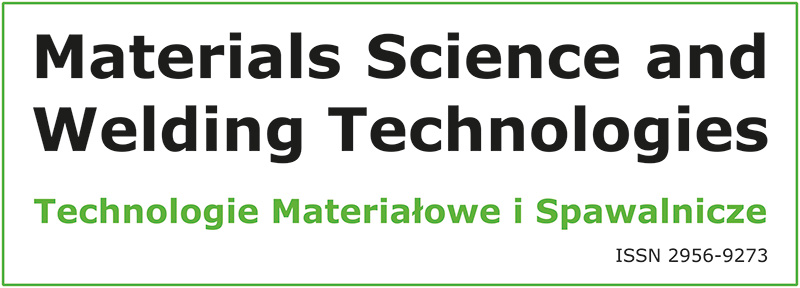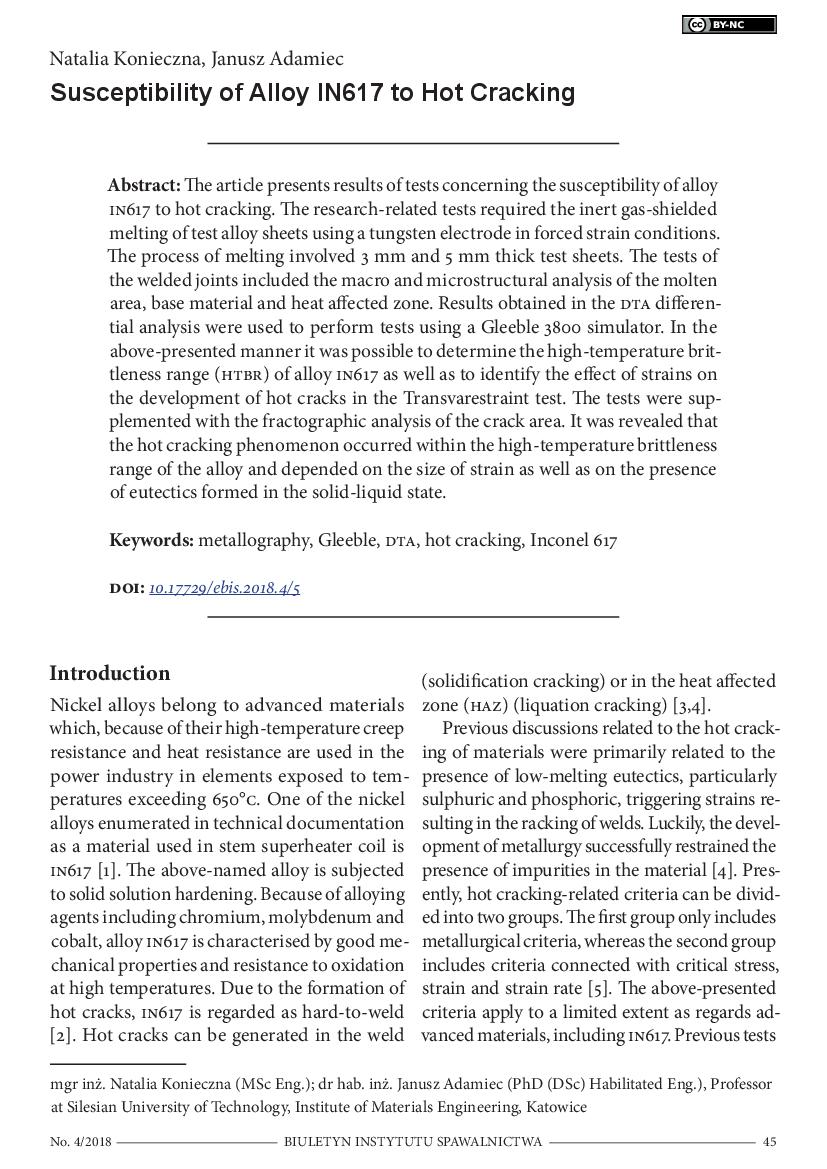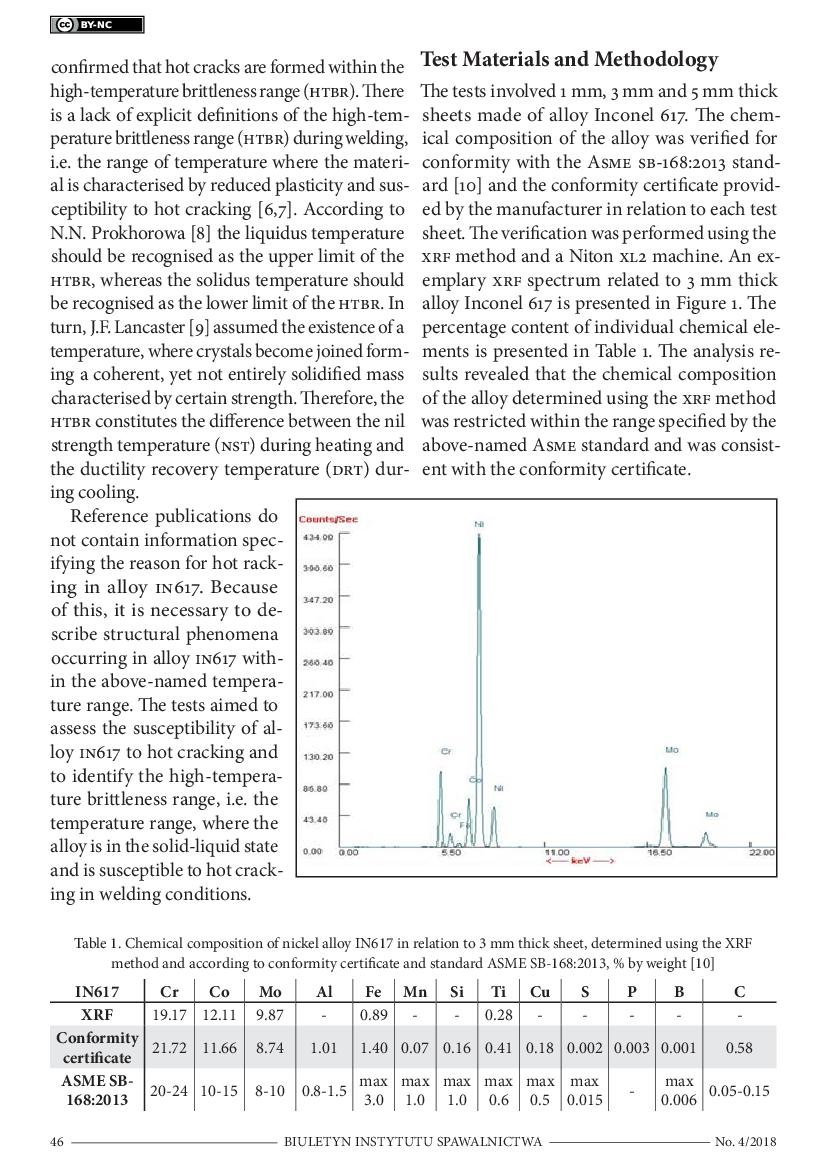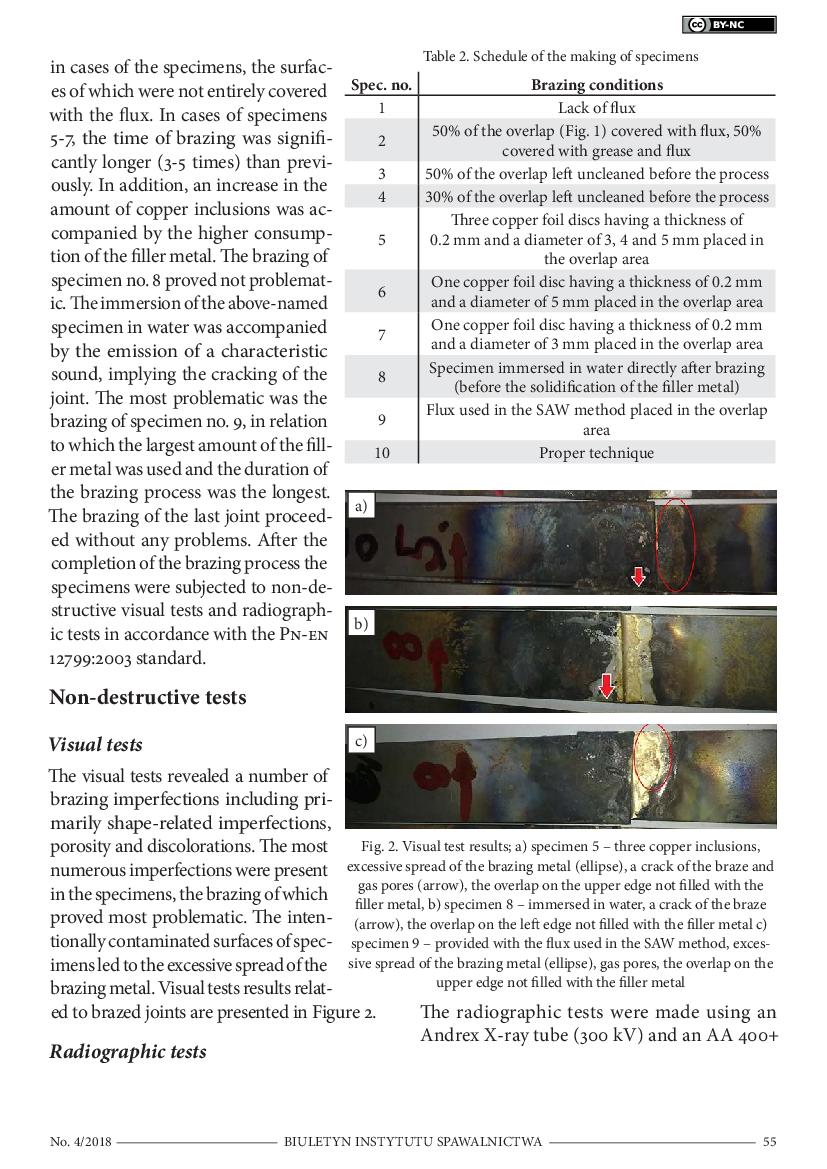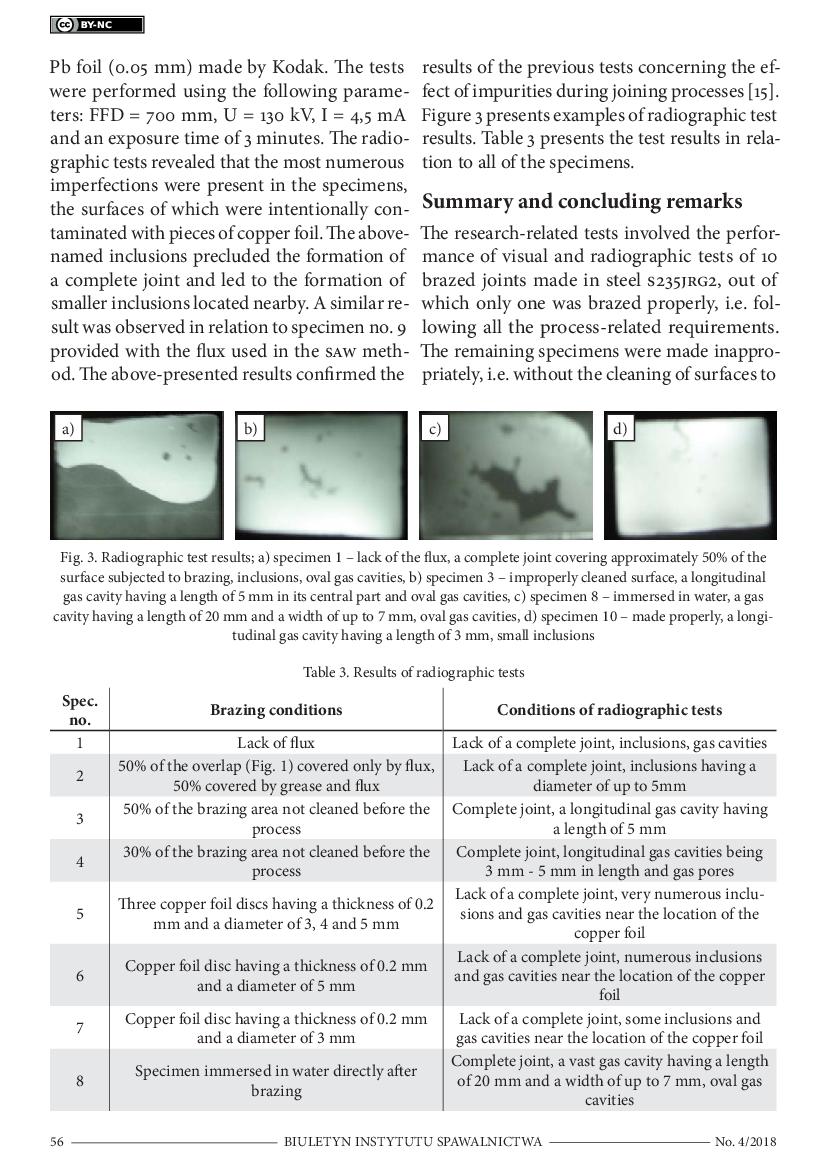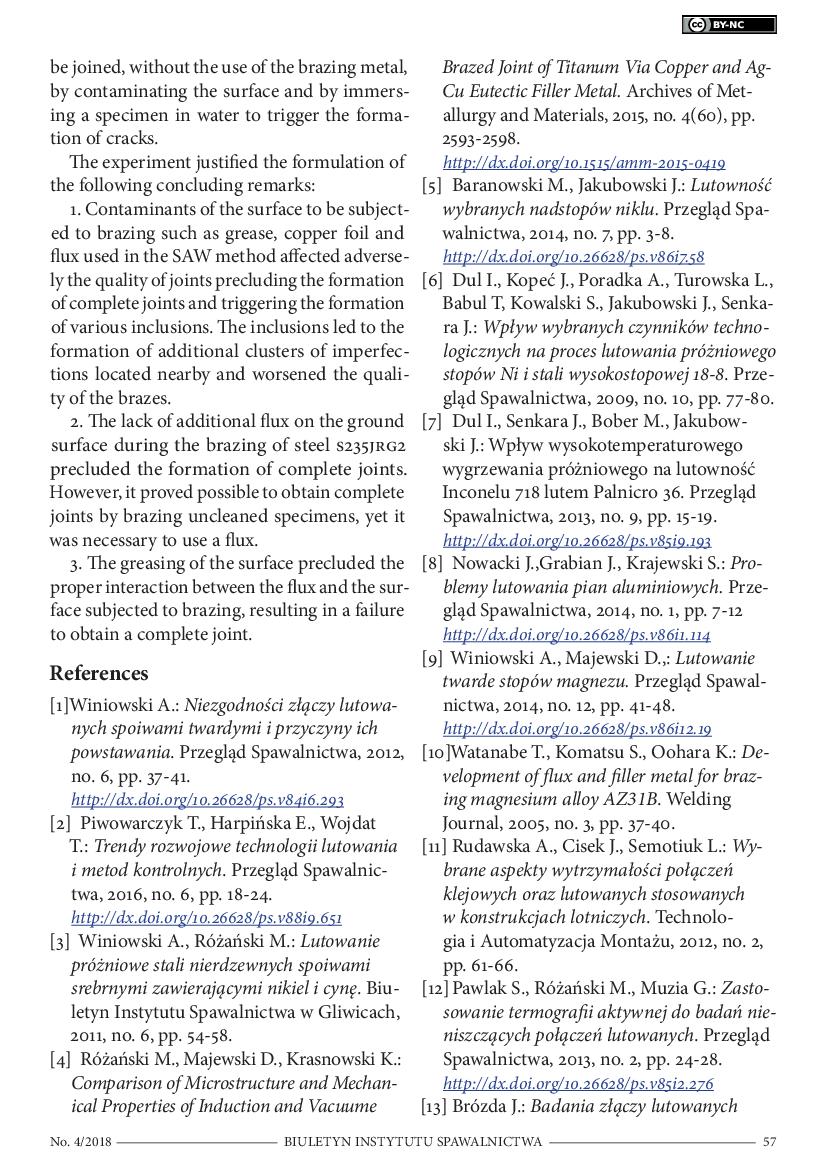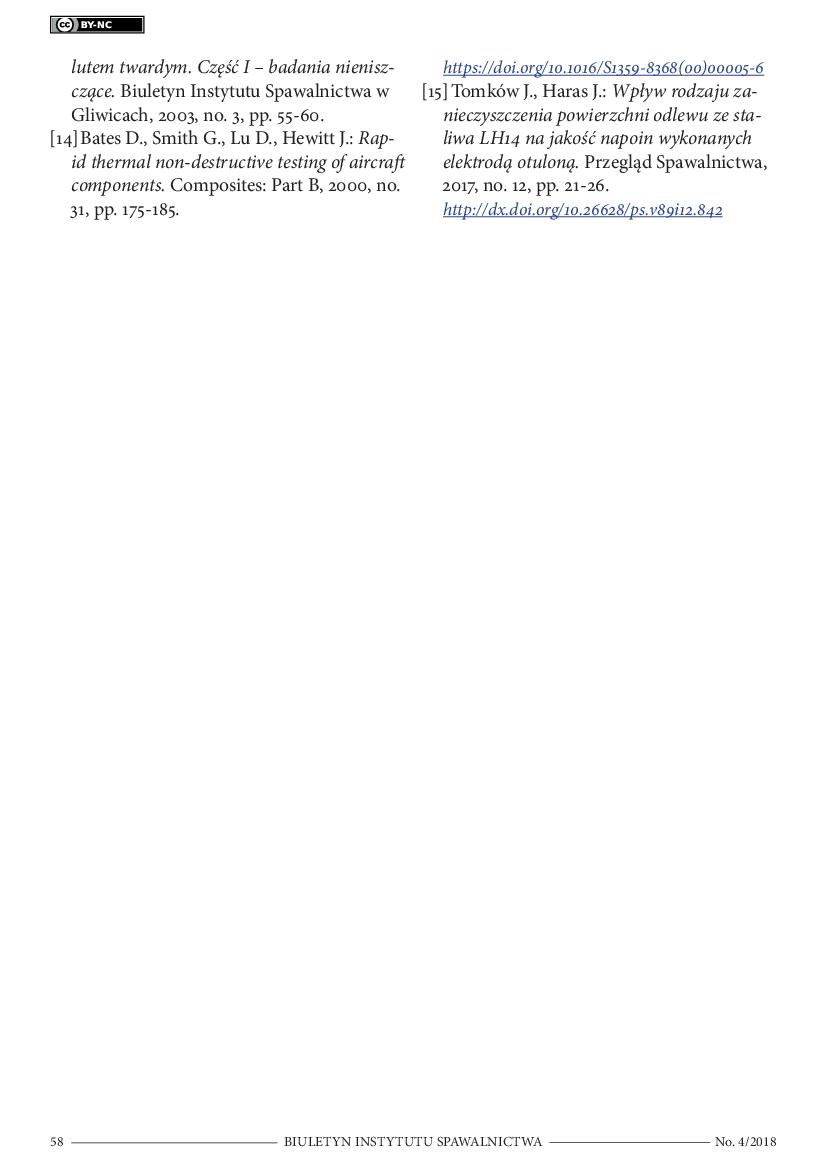Susceptibility of Alloy IN617 to Hot Cracking
The article presents results of tests concerning the susceptibility of alloy IN617 to hot cracking. The research-related tests required the inert gas-shielded melting of test alloy sheets using a tungsten electrode in forced strain conditions. The process of melting involved 3 mm and 5 mm thick test sheets. The tests of the welded joints included the macro and microstructural analysis of the molten area, base material and heat affected zone. Results obtained in the DTA differential analysis were used to perform tests using a Gleeble 3800 simulator. In the above-presented manner it was possible to determine the high-temperature brittleness range (HTBR) of alloy IN617 as well as to identify the effect of strains on the development of hot cracks in the Transvarestraint test. The tests were supplemented with the fractographic analysis of the crack area. It was revealed that the hot cracking phenomenon occurred within the high-temperature brittleness range of the alloy and depended on the size of strain as well as on the presence of eutectics formed in the solid-liquid state.
doi: 10.17729/ebis.2018.4/5
 1 / 6
1 / 6
 2 & 3 / 6
2 & 3 / 6
 4 & 5 / 6
4 & 5 / 6 6 / 6
6 / 6
